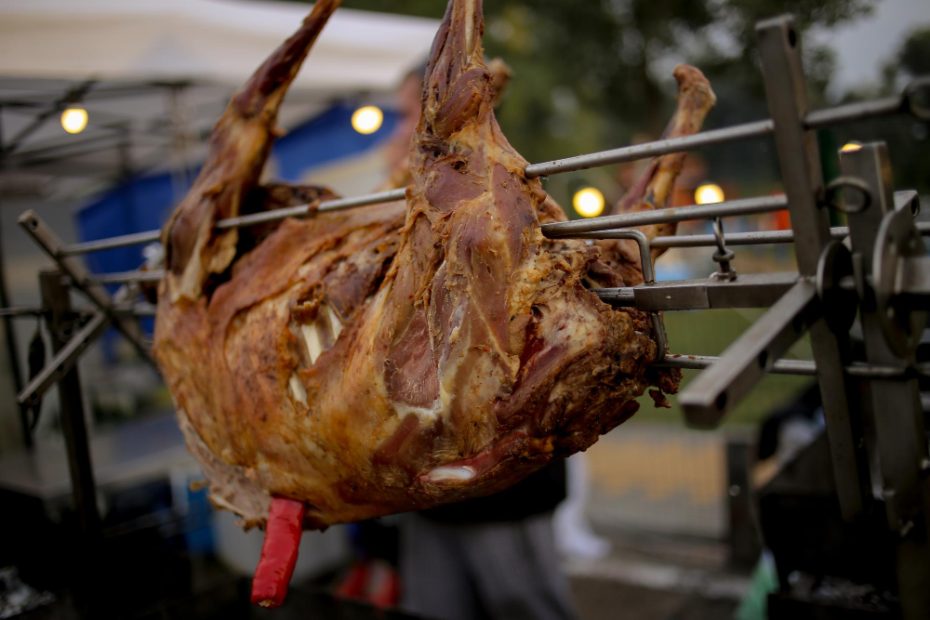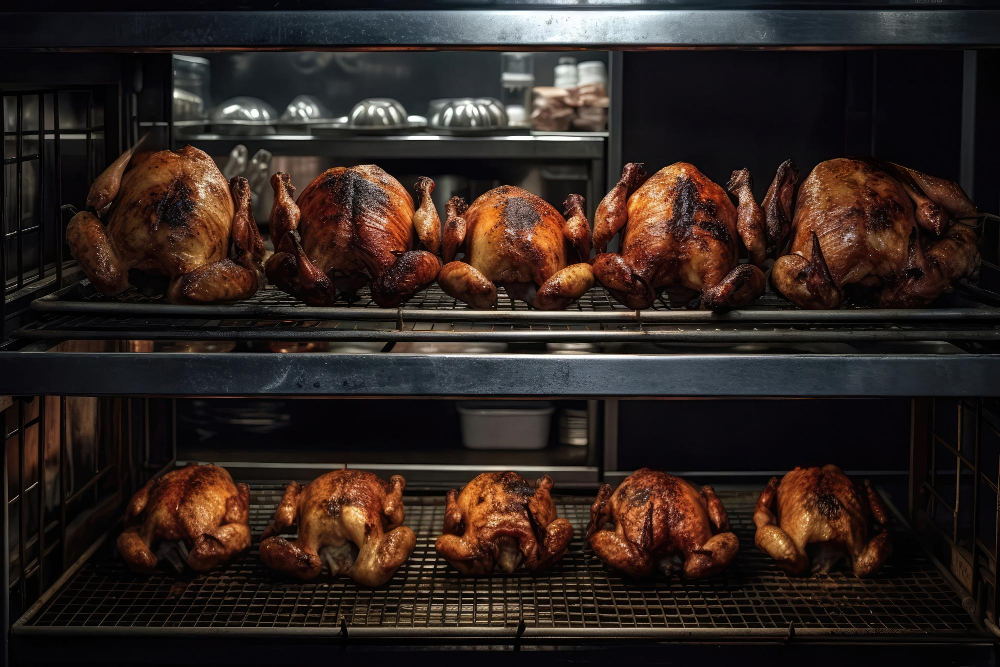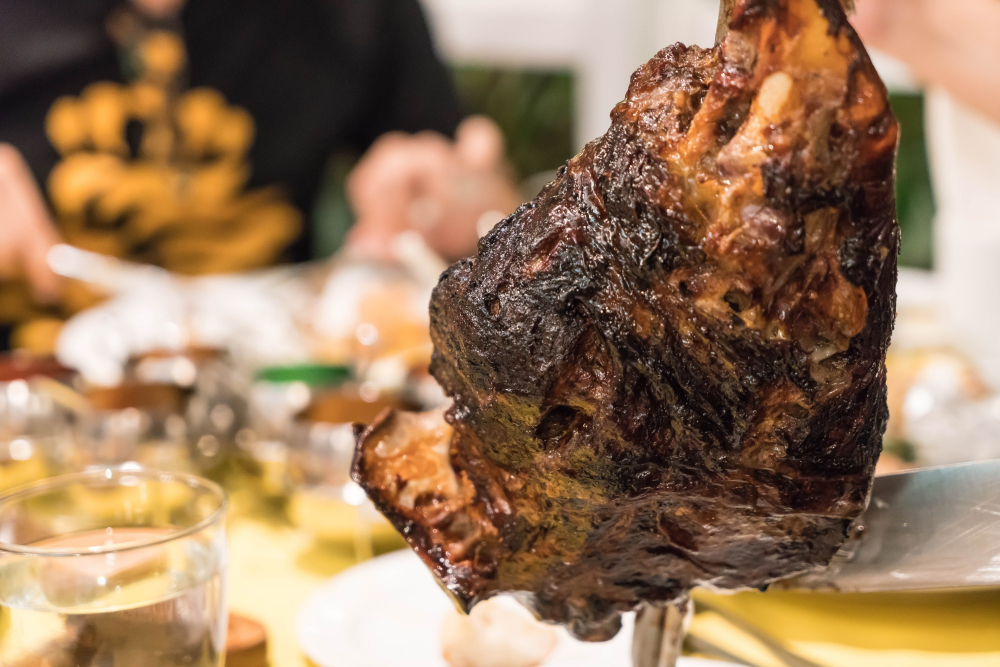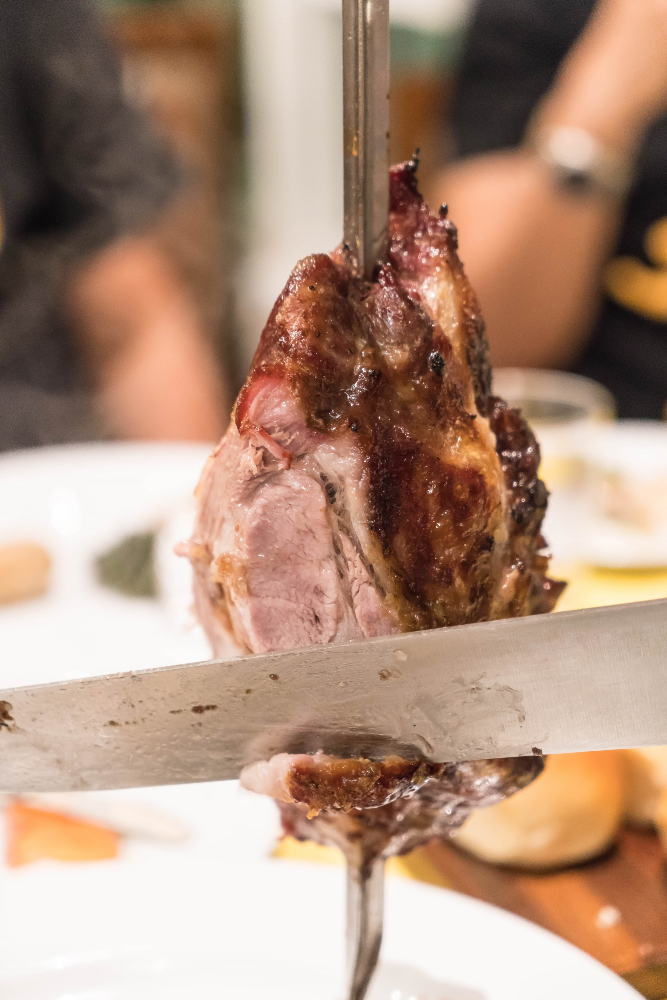How long do you cook a BBQ on a rotisserie?
A rotisserie is a fantastic addition to any barbecue setup, allowing you to slow-cook meats to perfection. If you’re wondering how long it takes to cook a BBQ on a rotisserie, it depends on various factors such as the type of meat, size, and temperature. Let’s dive into the details and explore the ideal cooking times for different types of meat on a rotisserie.
Cooking Times for Rotisserie Meats
When it comes to cooking meats on a rotisserie, the general rule of thumb is to allow around 15-20 minutes per pound. However, each type of meat may require specific cooking times to ensure that it is cooked thoroughly and remains juicy and flavorful.
Chicken
If you’re rotisserie cooking a whole chicken, it typically takes approximately 1.5-2 hours to cook at a temperature of around 350°F (180°C). Ensure that the internal temperature reaches 165°F (75°C) for safe consumption.
Pork
Pork, especially pork loin or tenderloin, is perfect for rotisserie cooking. A 3-pound pork loin will take roughly 1.5-2 hours at 350°F (180°C) to cook through. The internal temperature should reach 145°F (63°C) for medium-rare or 160°F (71°C) for well-done pork.
Beef
For beef, it’s best to choose cuts like ribeye roasts, tri-tip, or prime rib. Cooking times can vary depending on the size and cut of the meat. A general estimate would be around 15-25 minutes per pound at 325°F (163°C). Aim for an internal temperature of 135°F (57°C) for medium-rare or adjust accordingly for your desired doneness.
Lamb
Lamb is another delicious meat that works well on a rotisserie. A leg of lamb, weighing around 4-5 pounds, will take approximately 2-2.5 hours to cook at 350°F (180°C). The recommended internal temperature is 145°F (63°C) for medium-rare or 160°F (71°C) for well-done lamb.
Tips for Perfect Rotisserie Cooking
- Season your meat: Before placing the meat on the rotisserie, make sure to season it well with your favorite herbs, spices, or marinades to enhance its flavor.
- Preheat your grill: Always allow your grill to preheat before starting the rotisserie. This helps to ensure even cooking and prevent sticking.
- Use indirect heat: When cooking on a rotisserie, it’s best to use indirect heat. This means keeping the burners or coals on one side of the grill and placing the meat on the other side.
- Baste your meat: To keep the meat moist and flavorful, basting it with a sauce or marinade during the cooking process can work wonders.
- Monitor the temperature: Invest in a reliable meat thermometer to check the internal temperature of the meat and avoid undercooking or overcooking.
Pro tip: Letting the cooked meat rest for a few minutes before slicing allows the juices to redistribute, resulting in a more tender and flavorful end product.
With these guidelines and a little practice, you’ll be able to achieve perfectly cooked rotisserie meats that will impress your guests at every barbecue. Enjoy the delicious flavors and aromas that the rotisserie cooking method brings to your outdoor grilling experience!
Do you close the grill lid when using a rotisserie?
Using a rotisserie on your grill can add a new level of flavor and tenderness to your meats. However, there is often confusion about whether you should keep the grill lid open or closed while using a rotisserie. Let’s explore the benefits of both options.
Grill Lid Open
Leaving the grill lid open while using a rotisserie allows for direct heat and airflow. This method is ideal for searing the meat and creating a crispy exterior. The open lid allows smoke to escape, preventing excessive smoking and ensuring the flavors are not overwhelming. It also allows you to keep a close eye on the cooking process, making it easier to monitor the meat’s color, temperature, and doneness.
Grill Lid Closed
Closing the grill lid when using a rotisserie creates a more oven-like environment. This method promotes even heat distribution, as the heat circulates around the meat. With the lid closed, the rotisserie captures the meat’s natural juices, resulting in a more moist and tender final product. Additionally, closing the lid helps to retain the smoky flavors during a longer cooking process.
Ultimately, whether you choose to keep the grill lid open or closed when using a rotisserie depends on your desired outcome. If you prefer a crispy exterior and have control over the cooking process, an open lid is recommended. On the other hand, if you want a juicy and evenly cooked meat, closing the lid is the way to go.
“Whether you choose to keep the grill lid open or closed when using a rotisserie depends on your desired outcome.”
No matter which method you choose, it’s important to keep the grill lid clean and properly maintained. Make sure to follow the manufacturer’s instructions for your specific grill and rotisserie attachment.
Now that you understand the pros and cons of each option, you can confidently decide how to use the rotisserie the next time you fire up the grill. Enjoy experimenting with different techniques to achieve the perfect rotisserie-cooked meats!
Do You Need a Back Burner for Rotisserie?
When it comes to cooking delicious meals, many enthusiasts turn to rotisserie cooking to achieve perfectly tender and flavorful results. Whether you’re roasting a succulent whole chicken, a juicy rack of ribs, or a marinated leg of lamb, a rotisserie can be a great addition to your culinary repertoire. However, one question that often arises is whether or not you need a back burner for rotisserie cooking.
In short, the answer is yes, a back burner is essential for rotisserie cooking. The back burner provides the heat source directly behind the meat as it rotates, ensuring even cooking and creating a beautiful caramelized exterior. Without a back burner, the meat would only be cooked by the indirect heat from the surrounding elements, resulting in uneven doneness and a lack of that coveted crispy exterior.
The Benefits of a Back Burner for Rotisserie Cooking
Having a dedicated back burner for your rotisserie offers several benefits:
- Even Cooking: The back burner delivers direct heat to the meat, ensuring even cooking throughout and minimizing the risk of dry or undercooked spots.
- Crispy Exterior: The intense heat from the back burner helps create a deliciously crispy exterior on the meat, adding texture and flavor to your dish.
- Cooking Versatility: With a back burner, you have the option to use both direct and indirect heat simultaneously by using the main burners and the back burner together. This versatility allows you to cook a wide range of dishes.
Expert Tip:
When choosing a rotisserie grill, look for models that have a dedicated back burner or a rotisserie burner to ensure optimal results.
In conclusion, if you’re serious about rotisserie cooking, investing in a grill with a back burner is highly recommended. This feature will enhance your cooking experience and elevate the flavor and texture of your rotisserie dishes. Whether you’re hosting a backyard barbecue or simply enjoying a Sunday roast, a back burner will ensure that your rotisserie creations turn out perfectly every time.
How much charcoal do you use for a rotisserie?
When it comes to using a rotisserie for cooking, one of the most common questions that arise is how much charcoal to use. The amount of charcoal needed depends on several factors, such as the size and weight of the meat being cooked, the cooking time, and the type of rotisserie being used.
Calculating the right amount of charcoal
To calculate the right amount of charcoal, a general rule of thumb is to estimate 30 to 50 briquettes per kilogram of meat. However, this can vary depending on personal preference and the specific rotisserie setup.
“For a large roast weighing around 4 kilograms, you’ll need approximately 120 to 200 charcoal briquettes.”
It’s important to remember that the number of briquettes required may also differ depending on the type of rotisserie being used, as some may require more heat than others. Additionally, factors such as wind conditions and ambient temperature can impact the burn rate of charcoal, so it’s always a good idea to monitor the grill and adjust accordingly.
Tips for using charcoal on a rotisserie
Here are some tips to consider when using charcoal for a rotisserie:
- Use a charcoal chimney starter: This helps in lighting the charcoal evenly and quickly.
- Arrange the charcoal: Spread the lit charcoal evenly across one side of the grill, leaving the other side empty. This allows for indirect heat cooking.
- Add more charcoal if needed: If you find that the temperature is dropping during the cooking process, you can add a few more briquettes to maintain the desired heat.
Keep in mind that experience and experimentation will help you determine the perfect amount of charcoal for your specific rotisserie setup. Happy grilling!
Does meat cook quicker on a rotisserie?
Rotisserie cooking has gained popularity in recent years, particularly for preparing juicy and flavorful meats. Many people wonder if cooking meat on a rotisserie actually speeds up the cooking process. In reality, the answer depends on various factors.
How does a rotisserie work?
A rotisserie is a cooking method that involves roasting meat on a rotating spit over an open flame or heat source. The rotation allows for even cooking, as the meat rotates slowly and bastes in its own juices. This method is known for producing tender and evenly cooked meat with a crispy exterior.
Cooking time on a rotisserie
While a rotisserie can yield delicious results, it does not necessarily reduce cooking time. In fact, the cooking time for meat on a rotisserie can be similar to or even slightly longer than other cooking methods like grilling or roasting. The rotating motion helps cook the meat more evenly, but the overall cooking time remains relatively unchanged.
Factors such as the size and thickness of the meat, the level of heat, and the desired doneness all play a role in determining cooking time. It’s important to use a meat thermometer to ensure the meat reaches the appropriate internal temperature for safe consumption.
The benefits of cooking on a rotisserie
Although rotisserie cooking may not significantly reduce cooking time, it offers several advantages. The rotating motion helps render fat and baste the meat, resulting in a moist and flavorful end product. Additionally, the constant rotation helps distribute heat evenly, reducing the risk of hot spots.
Pro tip: Marinating your meat before placing it on the rotisserie can enhance its flavor and tenderness.
Another benefit of cooking on a rotisserie is the ability to cook larger cuts of meat that may not fit on traditional grills or in ovens. The slow rotation allows the meat to cook evenly from all sides, giving it a crispy exterior and tender interior.
In conclusion
While meat cooked on a rotisserie does not necessarily cook quicker, the rotating motion and other benefits make it a popular cooking method for those seeking flavorful and evenly cooked meats. Whether you’re grilling for a summer barbecue or preparing a festive roast, a rotisserie can be a great addition to your culinary arsenal.
Do I need a drip pan on a rotisserie?
Rotisserie cooking is a popular method of preparing food, especially when it comes to roasting meats. Whether you are using a rotisserie attachment for your grill or a standalone rotisserie oven, one question that often arises is whether or not you need a drip pan during the cooking process.
What is a drip pan?
A drip pan is a shallow pan placed beneath the food being cooked to catch any excess drippings. These drippings can include fat, juices, and marinades that may fall off the meat as it rotates. The purpose of a drip pan is to prevent these drippings from falling onto the heat source and causing flare-ups or excessive smoke.
The benefits of using a drip pan
Using a drip pan during rotisserie cooking offers several advantages. Firstly, it helps maintain a clean cooking environment by preventing drippings from accumulating on the heat source or inside the grill. This makes clean-up easier and reduces the risk of flare-ups.
Secondly, a drip pan can be used to collect drippings for making flavorful sauces, gravies, or basting liquids. By placing vegetables, herbs, or even wine in the pan, you can enhance the flavors of the drippings and create delicious accompaniments to your roast.
“Using a drip pan during rotisserie cooking offers several advantages. Firstly, it helps maintain a clean cooking environment by preventing drippings from accumulating on the heat source or inside the grill.”
How to use a drip pan
When using a drip pan on a rotisserie, it is important to place it directly beneath the meat to catch any drippings. Ensure that the pan is of an appropriate size to fit inside your rotisserie setup without obstructing the rotation of the meat.
You can line the drip pan with aluminum foil for easy clean-up or use a disposable aluminum pan. If using a disposable pan, make sure it is sturdy enough to hold the drippings without bending or leaking.
Conclusion
In summary, while using a drip pan on a rotisserie is not absolutely necessary, it offers several benefits such as maintaining a clean cooking environment and allowing you to collect flavorful drippings for sauces or basting liquids. It is a small investment that can greatly enhance your rotisserie cooking experience.



